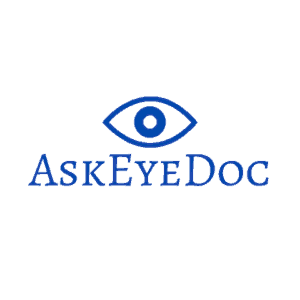Red eyes are frowned upon in the beauty industry. So, it is no wonder so many people turn to redness-relief drops.
Red eyes can be a sign of much more than just lack of sleep. If you have chronic red eyes make sure to see your eye doctor for evaluation.
The causes of dry eyes are numerous and unless evaluated under a slit-lamp microscope by an eye doctor, the diagnosis would be difficult.
Redness relief
Back in the ’90s, we used to be bombarded by commercials from Visine and ClearEyes. For those of us who grew up in the 90s Ben Steins, Clear Eyes commercials may still stick in your head. For some reason, his monotone voice and lack of enthusiasm could be entertaining.
Redness relief eye drops are still popular now because they are very effective at relieving redness quickly but temporarily and at a cost.
So why do patients need to avoid whitening or redness-relief eye drops?
Most redness-relief eye drops contain decongestants that cause vasoconstriction (constriction of the blood vessels) leading to a lack of oxygen. This lack of oxygen triggers a signal to the brain leading to neovascularization (growth of new blood vessels). Neovascularization causes our eyes to become redder with time, which is the opposite effect of what we want with redness-relief.
The medication in redness relief drops causes rebound vasodilation (increased diameter of blood vessels) leading to an increase in redness of the eyes usually to a degree stronger than initially present.
This cycle of vasoconstriction, neovascularization, and vasodilation leads to dependence and overuse of redness relief drops with a decrease in effect over time.
Neovascularization is also very common in contact lens wearers due to a lack of oxygen transmitting through the contact lens. It is very important to change your contact lenses as directed and to clean them properly to get the most oxygen transmissibility.
Some popular redness-relief eye drops to avoid include Opcon-A, Naphcon-A, clear eyes, and Visine.
So what can you recommend to patients for red-eye relief?
In July 2018 Bausch & Lomb introduced Lumify derived from a glaucoma eye drop called brimonidine. Studies have shown that Lumify allows for more optimal blood flow from larger vessels of the eyes, while still creating effective vasoconstriction of the superficial vessels that cause redness in the eyes.
If you need redness relief, then Lumify can be a good option. Keep in mind that Lumify is very drying and if the cause of your red eyes is dryness, then the Lumify can exacerbate your dry eye symptoms.
Make sure to talk to your doctor if you are using Lumify and only use it as directed. Discontinue use if you develop an allergic reaction.
Some typical triggers for red eyes are:
- Smoke exposure
- Environmental irritants
- Inflammation
- Dry Eyes
- Conjunctivitis (pink eye) (click here for more information on conjunctivitis)
- Allergies (click here to learn how to combat itchy eyes)
- Cold or Flu
- Contact lens overwear (click here to learn more about contact lens overwear)
- Glaucoma
- Eye drops that treat glaucoma (click here to learn more about glaucoma eye drops)
- Eyelash growth serums (ie: Latisse)
- False eyelashes
- Meibomian Gland Dysfunction/Blepharitis (click here to learn more)
- Eyelid laxity (aging skin)
- Eye injury or surgery
- Eye rubbing
- Stress
- Lack of sleep
- Excessive screen time on electronic devices
- UV exposure
- Radiation
The list can go on and on, which is why it is so important to see your eye doctor regularly at least once per year or as directed by your eye doctor.
Artificial tears are safe and effective at relieving redness due to dry eye.
How to use Artificial tears:
Artificial tears are used to lubricate and moisturize our eyes. Usually, it is recommended to use artificial tears 3-6 times per day depending on your symptoms. Refer to the dry eye post for more treatment options.
If you need artificial tears more than 4 times per day then make sure to use preservative-free drops. When using preservative-free Artificial tears it is important to always open a fresh vial each day.
Always wash your hands before touching your eyes and make sure that the tip of the bottle does not touch your eye. It is ok to insert the drop anywhere into your eye as long as it gets in.
Always check the expiration date on the bottle or box and make sure the tip of the bottle looks clean.
Side Effects of Artificial tear usage:
There are very few side effects with the use of artificial tears. Allergy to artificial tears usually is due to preservatives in the eye drops. The symptoms of an allergy can be redness, burning, and itching. Switching to a preservative-free eye drop may relieve the allergy symptom.
For itchy eyes due to allergy antihistamine eye drops (such as Zaditor or Alaway) can be effective; however, the antihistamine can cause more dryness.
Another potential side effect is temporary blurred vision, usually due to the thickness of the drops. Some artificial tears have a milky appearance that causes a temporary fog after installation for a few minutes.
If you wear contact lenses make sure to use eye drops specific for contact lenses.
The Bottom Line:
Red eyes can be unsightly and bothersome. Knowing what is causing your patient’s red eyes can aid in the prevention and worsening of your symptoms. Using Artificial tears and Lumify eye drops provides the best treatment without the rebound redness that you get from redness relief eye drops. (Click here for a chart of Doctor recommended Artificial tears).


